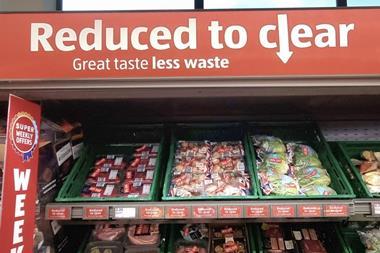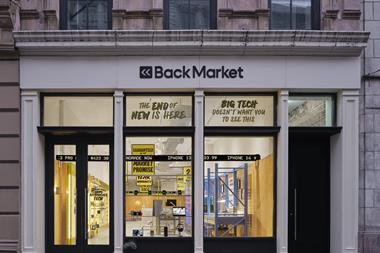With benefits such as cost savings and increased competitive advantage, it’s clear why retailers are eager to launch green projects and create a more sustainable business model
Joel Black, consultant, Kurt Salmon
Marks & Spencer’s strong profit expectations from their sustainability initiative, Plan A, are not an irregularity. Indeed, Kurt Salmon’s research has shown that retail business leaders have changed from perceiving climate change as a risk, to an opportunity that could deliver competitive advantage. As such, many retailers are eager to launch green projects and create a more sustainable business model.
However, despite being of strategic importance, there’s considerable confusion about how to identify the benefits - and profit - from going ‘green’. The reality is that many organisations, not just retail companies, lack the internal skills and knowledge to improve their business in a sustainable way, and mistakenly apply ‘greenwash’.
In this tough economic climate, it is clear the only viable ‘green’ endeavour is one that has a direct and positive business impact. By applying the right framework, retailers can introduce sustainability initiatives that benefit the bottom and top line by delivering lower operational costs and exposure to regulatory risks and also help to drive brand equity with customers.
How to avoid ‘greenwash’
To achieve a sustainable return on equity, retailers should focus on at least one of these four areas:
• Renewable Energy Strategy:
Building the business case
• Product Engineering: Examining the product lifecycle
• Carbon Flow Engineering: Reducing the supply chain impact
• Asset Optimisation: Improving and sustaining profitable performance
Of these, the first two are probably longer term investments, but are being looked at seriously by brands such as H&M and Puma. The Carbon Flow Engineering and Asset Optimisation opportunities, Kurt Salmon believes, will deliver benefits in the shorter term. Retailers such as Tesco and Kingfisher are already involved in this.
Carbon flow engineering
Taking a closer look at the Carbon Flow Engineering option, it is important to understand that at each supply chain ‘node’ there are cost, service, environmental impact and capacity considerations. To calculate the true ‘end-to-end’ cost it is important to understand the levers behind energy consumption, CO2 emissions, service and capacity at each of these nodes.
This can be achieved with the creation of a ‘true cost to serve’ model for the entire supply chain, from raw material to shelf in stores. In this process different component costs and characteristics should be identified, to enable:
• Product category profit transparency and ‘true cost’
• Impact of future strategic initiatives on ‘true cost’ and service
• Capacity and constraint visibility to meet future requirements
The end goal should be to develop a more adaptive and appropriate supply chain.
Asset optimisation
Fixed assets are another area that can deliver environmental efficiency.
Managers must understand the key drivers of profitability and sustainability to develop more effective facilities and improve staff performance. To achieve this, they should:
• Optimise the store portfolio: Model key drivers of store/format profitability and sustainability to optimise the existing store portfolio
• Re-design stores: Retrofit or design optimal structures to reduce environmental impact, improve productivity and resource use
• Improve facilities performance: Implement DC productivity programmes that improve labour, energy productivity to reduce costs by up to 20%
• Increase staff effectiveness: Re-engineer processes, re-schedule labour and coach performance to reduce costs by 10% while improving customer service and environmental performance
Retailers at risk
Whatever the outcome of the climate change debate, the impact of public opinion, media scrutiny, government intervention and private investment will change the business environment dramatically.
All retailers are currently at risk from increasingly restrictive environmental legislation and changing consumer demand. Those that are attuned to the new ‘sustainable’ economy and produce products and services to match will emerge as champions.


























No comments yet